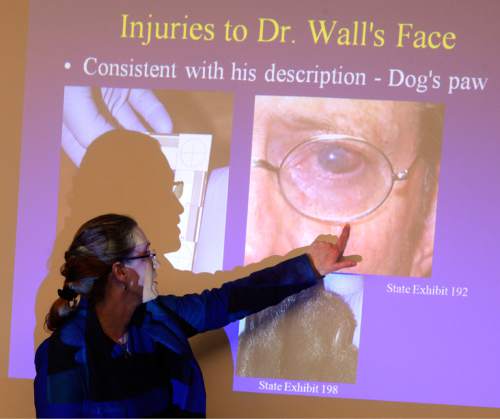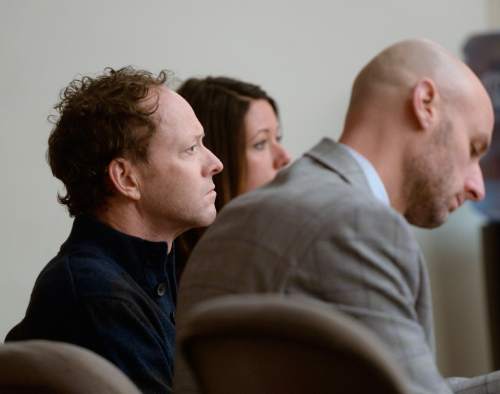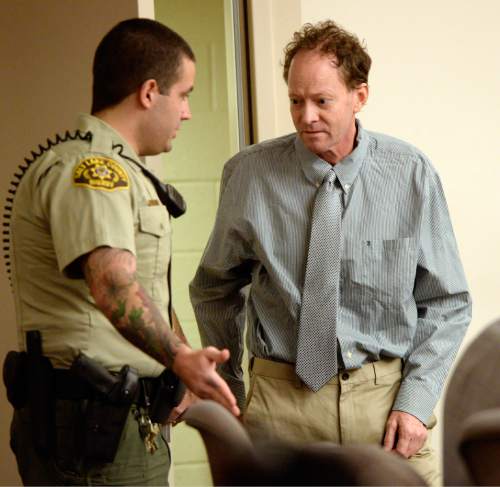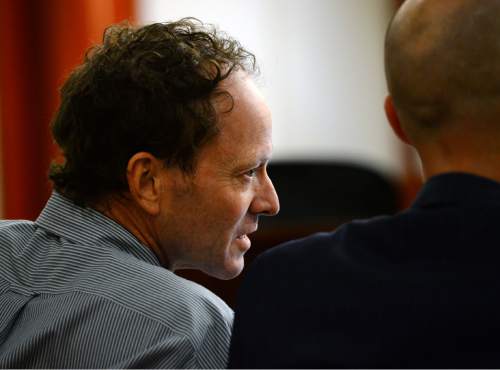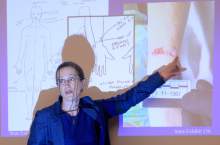This is an archived article that was published on sltrib.com in 2015, and information in the article may be outdated. It is provided only for personal research purposes and may not be reprinted.
As a trial continued Monday for Johnny Brickman Wall — accused of killing his ex-wife at her Sugar House home in 2011 — his defense team called a forensic expert who opined that wounds on Uta von Schwedler's wrist and leg were "more likely self-inflicted" than defensive.
Judy Melinek, a forensic pathologist from California, was addressing the key question of the trial: Was von Schwedler's death a homicide, suicide or accident?
A prosecution expert testified earlier that the wounds on von Schwedler's body were defensive, meaning they were inflicted as she tried to fend off an attacker.
And a Utah state medical examiner testified that the wounds appeared to him "more defensive" than self-inflicted.
But Melinek told a 3rd District Court jury that wounds inflicted by others usually aren't in parallel lines, as were the cuts on von Schwedler's wrist.
Melinek also talked about "hesitation wounds," saying a suicidal person does that when "they are testing to see what they can tolerate. It's superficial, linear."
Melinek said Monday that she concluded that von Schwedler died from drowning, but she was impaired by a large amount of Xanax in her system.
"She was intoxicated when she committed a self-destructive act," Melinek testified.
Both Melinek and Utah assistant medical examiner Erik Christensen declared von Schwedler's manner of death "undetermined." But while Christensen said he could not determine whether the death was a suicide or a homicide, Melinek testified that she believes it was either a suicide or an accident.
"I really don't think this is a homicide," the defense expert said.
Prosecutors have charged Wall, 51, with first-degree felony murder, accusing him of murdering von Schwedler after a messy divorce and years of a custody battle over their four children.
The 49-year-old woman, a University of Utah scientist, was found in a bathtub full of water by her boyfriend on the evening of Sept. 27, 2011.
Melinek said she believed the death scene also supported a suicidal or accidental death. She pointed out that there was no evidence of a struggle in the bathroom, and that bloody smear marks on the tub could have been an indication that an intoxicated von Schwedler was lowering herself into the tub after cutting herself.
While under cross-examination, prosecutor Anna Rossi asked Melinek about the possibility that the scene was staged to look like a suicidal death.
"To me, this doesn't look like a staged scene," Melinek said. "For one thing, the [Xanax] pills would be in the scene. That's how you would stage it."
How the anti-anxiety medication — for which von Schwedler had no prescription — got into the woman's body is still a mystery.
Throughout trial, prosecutors have implied that von Schwedler was injected with the drug — a needle mark that was later covered by a stab wound on her left wrist.
But Melinek said she believes von Schwedler took the pills orally, and may have vomited some of the medication while she was drowning in the bathtub.
No Xanax pills were found in von Schwedler's home, according to trial testimony.
Also Monday, Wall's defense team called blood spatter expert Anita Zannin, who testified that von Schwedler's blood-stained comforter did not indicate a struggle.
"We've got movement," Zannin said. "But what caused it — one person, two persons, 10 people — I can't answer that."
Zannin's conclusions were an attempt to counter previous testimony from the state's expert witness, Rod Englert, who told jurors during the first week of trial that he felt the blood spatter and crumpled bedding was indicative of a fight.
"This comforter is consistent with a violent struggle," Englert testified. "There's some violence going on, a struggle. More than one person."
Wall was charged and arrested in April 2013 and has been held in jail in lieu of $1.5 million cash-only bail.
The lag in the time between von Schwedler's death and charges being filed was explained, in part, on Tuesday by Salt Lake City police Detective Cordon Parks, who testified that a sergeant said von Schwedler's death was a suicide and ordered him to close the case in January 2012. Police Chief Chris Burbank later reopened it, Parks said.
The case could be in the hands of the jury sometime Tuesday.






